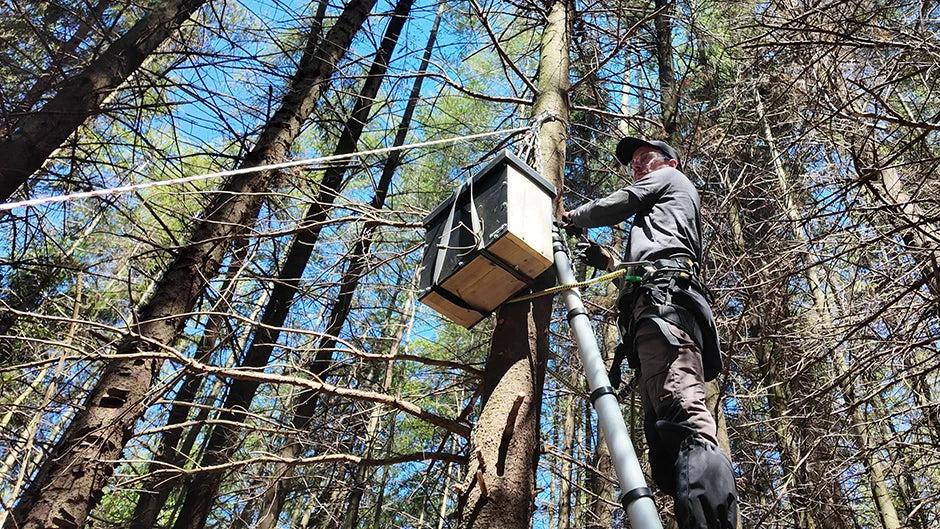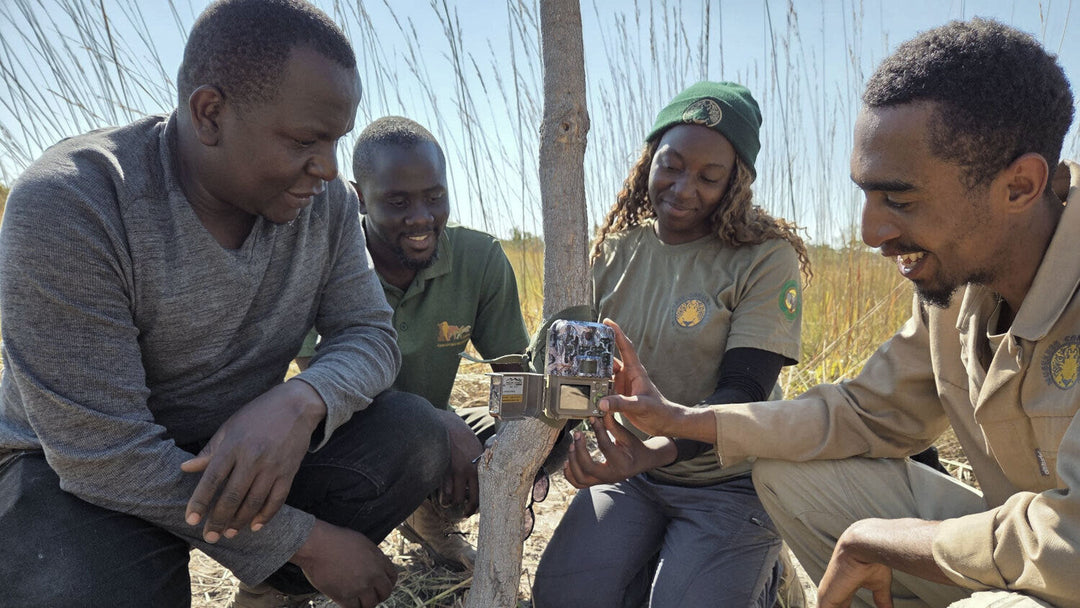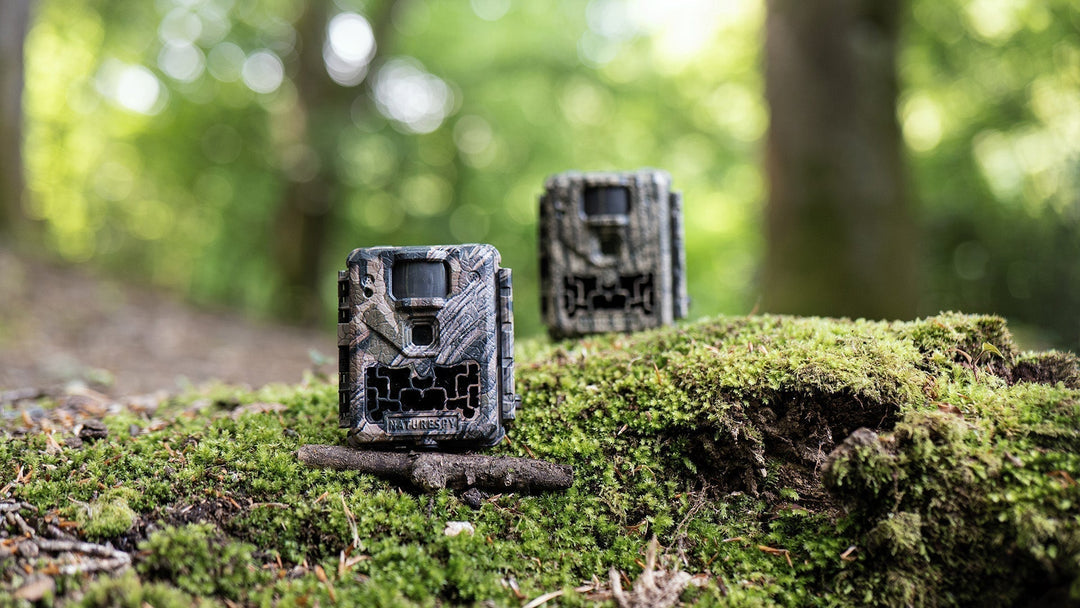Behind the Citizen Spy: Instant Wild
Developed by the Zoological Society of London, Instant Wild is a mobile app and website, which displays live wildlife photographs that have been instantly sent from camera traps around the world.
Users view, comment on and identify the species seen in the image. This is the first citizen science project of its kind and gives the public a glimpse into the lives of amazing species.
The Project Coordinator for Instant Wild is Louise Hartley, who has been chatting to us about this fantastic project...

[KH] Thank you Louise for tearing yourself away from the amazing world of Instant Wild to speak to me today. As the project coordinator, does it often feel like you are being transported from your London office, through the images, to the wilds of places like Kenya and Sri Lanka?
[LH] Absolutely, all of the images come into my email as well as being posted on Instant Wild, so it is great when I first get in to work in the morning, go through my inbox and get to look through the latest images. It never ceases to amaze me that here I am sat in my office in London and I get to see an elephant or mongoose 1,000s of miles away going about its daily business.
[KH] Of course, it is not just you who gets to be transported away; anyone who wishes to take part as a citizen scientist gets to experience places and wildlife they may otherwise never get to see. How many (and possibly what kind of people and where from) people have taken part and what feedback have you got from them about the experience?
[LH] To date we have had just under 130,000 downloads of the app. We don’t collect demographic data at the moment but we will be issuing a user questionnaire shortly to find out this type of information as it will be really useful to see the age group of users and their geographic locations to support app development. We have had some amazing comments from people about how Instant Wild helps them feel more connected to nature and how it is an easy, fun way to actively take part in conservation work to monitor wildlife.

[KH] Wow, sounds like some pretty happy citizen scientists, but as with all science their individual contributions fit into a much bigger picture; how are these people contributing to the work of the Zoological Society of London?
[LH] Instant Wild gives us the ability to quickly know if a rare and threatened species has been spotted on camera and helps us build up a picture of species type in a particular area, for example the critically endangered Javan leopard has been spotted on our Indonesia camera and the mountain mouse deer in Sri Lanka had not been photographed since 2007 until it was photographed on Instant Wild in 2011. This is important information to support the conservation work of our field operators. It is also part of ZSL’s mission to encourage engagement in conservation and we think Instant Wild is an amazing tool to give citizens insight into the natural world that they never had before and raise awareness of conservation issues.

Critically endangered Javan leopard on an Instant Wild camera trap. Image: ZSL[/caption]
[KH] So you and all of the researchers at the ZSL really value the contributions made by these citizen scientist?
[LH] Definitely. The information is really useful for our field operators, for example our cameras set up at Lolldaiga Hills in Kenya have been used to help populate the mammal and bird species lists for the area. We have spot checked the accuracy of peoples species identifications and the average is usually around 90%, which is excellent.
[KH] Good to hear. All of these wonderful places in which you have camera traps must open very different windows to the natural world; what makes each of them special?
[LH] I think the different species that are spotted at each of our sites. We have had cameras in Kenya for quite a while so users have got used to the species often spotted however we have just had a new camera go live in Costa Rica, courtesy of the Ocho Verde preserve, which has a very different species list. It is great to see users learning these Costa Rican species and improving in their identifications.

Mountain mouse-deer.
[KH] It must be very hard to choose your favourite camera trap images from such a range of locations, but could you give it a try for us?
[LH] It is certainly difficult but I would probably say Lewa Wildlife Conservancy in Kenya. We get so many amazing elephant and rhino photos come in from this site.

[KH] Incredible captures, the team must be very pleased. But to achieve these the project has had to use some pretty nifty technology right?
[LH] All the camera traps that we use at the moment are GSM-enabled (cellular). The cameras are motioned triggered using PIR sensors (passive infrared) so as an animal walks past an image is captured and sent to us within a couple of minutes using mobile networks. The image is then automatically pushed onto the Instant Wild app and website.
[KH] Wow, that certainly sounds impressive and this method of camera trapping seems to be expanding. Like all of us you must have faced some challenges when camera trapping wildlife; what has been your biggest challenge so far?
[LH] One of the biggest challenges we face is poor or unreliable mobile coverage. We sometimes only receive 10-20% of the images actually taken by the camera in a day due to unstable mobile signal. To overcome this challenge, ZSL has developed the first satellite-enabled camera trap, which we have called Instant Detect (ID). This means we can send images from anywhere in the world, even when there is no mobile signal available. We plan to use these new ID cameras to send images into Instant Wild so we can reach even more remote places.

A white-nosed coati in Costa Rica.
[KH] Instant Detect is one of the most exciting develops in camera trapping recently and we've been following it very closely - it has the capacity to make a massive difference in remote conservation. We are hoping to engage our community further by beginning our own citizen science project soon. What would be your top tip for us and our future citizen scientists be?
[LH] I would say building in functionality so citizen scientists can communicate with each other. One of the great things about Instant Wild is that there is a strong community and citizens can share their knowledge of species with others through the comment boxes.
[KH] Thank you; important advice. One last question for your Louise - what is Instant Wild’s top camera trapping goal for the next year?
[LH] Our goal is to deploy camera traps at three or more new sites to link with Instant Wild. We also want to formalise the way we do scientific studies on the app so citizens that take part can see the results more clearly.
[KH] They sound like a great goals, we wish you all the best and will you keep us up to date on how you get along?
[LH] Definitely!
[KH] Thanks again for a great interview, speak soon!
Find out more:
Instant Wild - Zoological Society of London's Edge of Existence programme
Instant Detect - Zoological Society of London
By Kat Holmes


